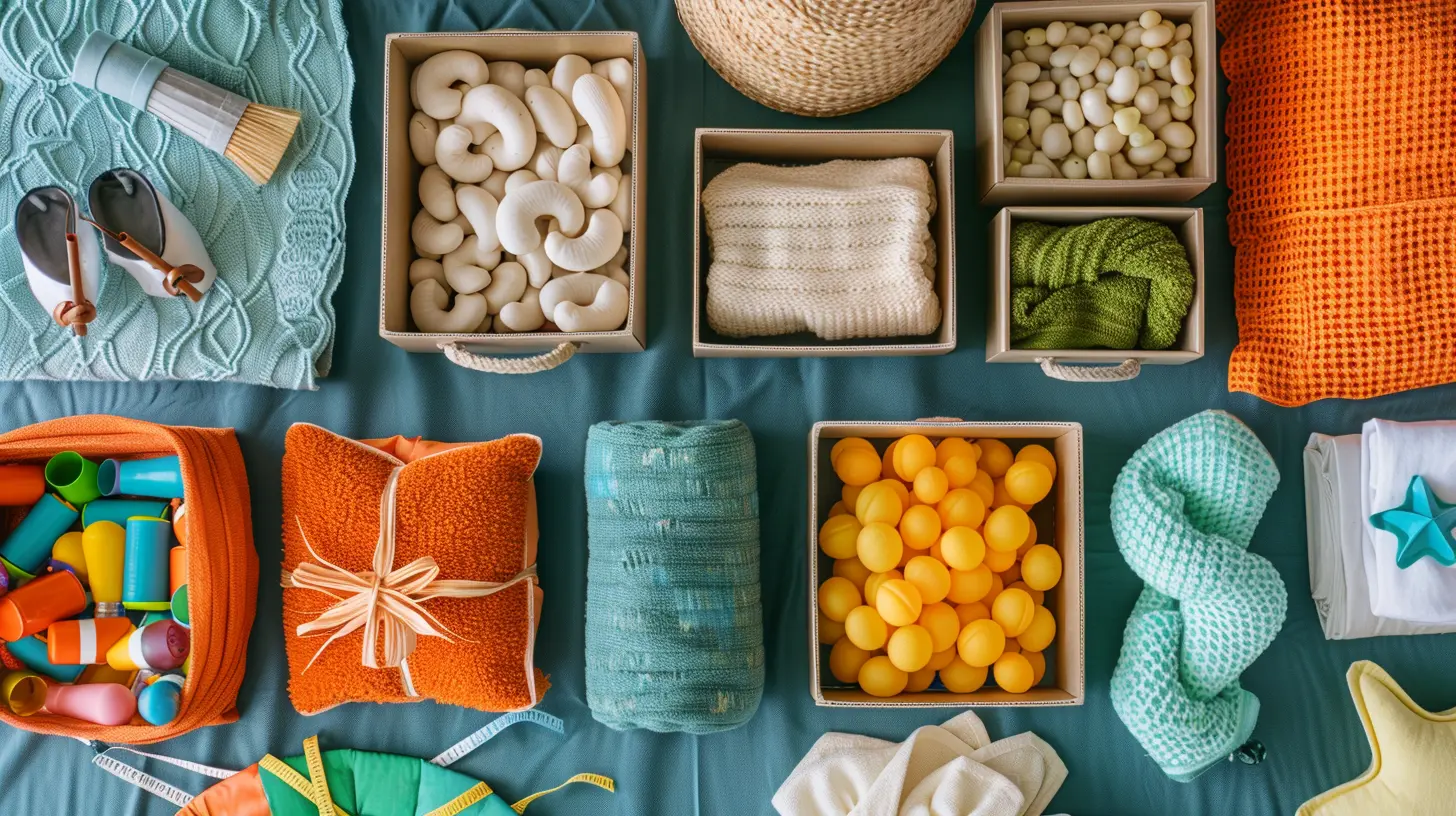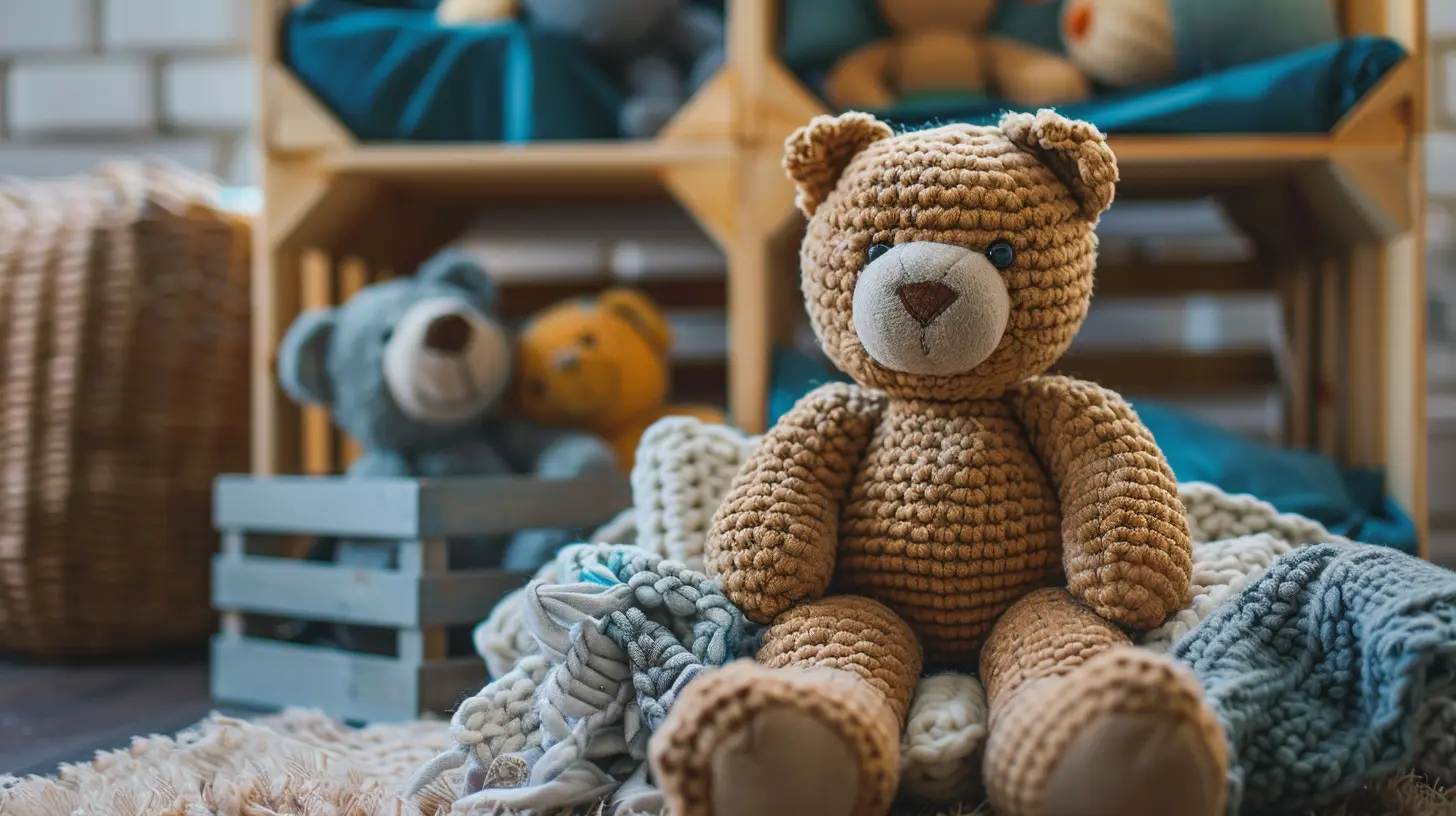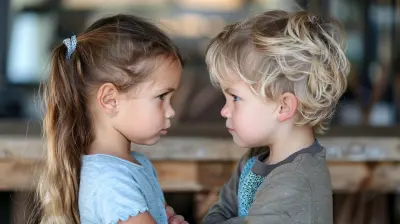How to Build a Calm-Down Kit for Kids
25 October 2025
Ever felt like your child is about to erupt like a tiny volcano? One minute they’re fine, and the next they’re flipping out because you gave them the blue cup instead of the green one. Trust me, you’re not alone. Kids feel big feelings, and let’s be honest—we adults totally do too. The difference is, they don’t always know what to do with those feelings.
That’s where a calm-down kit swoops in like a superhero in yoga pants.
This magical little box (or bin or bag or whatever you choose) is jam-packed with tools and goodies to help your little one manage their emotions and bring their inner chaos down a few notches.
Let’s break it all down—what you need, how to build one, and some tips to make it actually work when your kiddo’s spiraling like a spinning top on espresso.
What Is a Calm-Down Kit Anyway?
Imagine an emotional first-aid kit. A calm-down kit is a tool designed to help children self-regulate when they’re overwhelmed, angry, anxious, or just plain DONE. It’s a collection of calming items that engage their senses, distract their minds, and help soothe all those big, stormy feelings.It's like a spa day for their emotions—minus the cucumber water.
Why a Calm-Down Kit Works (Yes, It Actually Works!)
Kids need support in developing emotional intelligence. They’re just learning how to name, express, and manage their feelings. A calm-down kit gives them healthy coping strategies. Rather than yelling, throwing toys, or hiding under the dining table like a baby burrito, they’ll have go-to tools that empower them to process emotions in a safe and constructive way.And guess what? It gives you a break too. When your child knows what to do when they’re upset, you won’t have to play emotional firefighter every single time.
Who Can Use a Calm-Down Kit?
Everybody with a pulse and emotions, really. But it’s especially helpful for:- Toddlers and preschoolers learning emotional regulation
- Kids with sensory sensitivities
- Children with ADHD, autism, or anxiety
- Elementary-aged kids who need a daily reboot
It’s even helpful for teens, though you might need to disguise it as a “stress relief” box so it’s socially acceptable.
Step-by-Step: How to Build a Calm-Down Kit for Kids
Alright, let’s get crafty. Building a calm-down kit is way easier than assembling IKEA furniture—and way more satisfying.Step 1: Choose the Right Container
First, you need something to hold all the goodies. This could be:- A shoebox with stickers all over it
- A small storage bin
- A backpack (portable calmness!)
- A decorative basket
Pro tip: Let your child decorate it! Stickers, drawings, glitter—the whole nine yards. When they’re part of the creation process, they’re more willing to use it.
Step 2: Include Sensory Items (A.K.A. The Calm-Down MVPs)
Sensory toys are the rockstars here. They ground kids and provide an external focus when emotions feel out of control.Here are some tried-and-true favorites:
- Stress balls – Squish them, throw them (at a soft surface), repeat.
- Fidget spinners or cubes – They keep little hands busy and minds focused.
- Play-Doh or theraputty – Great for squeezing, rolling, and smashing those big feelings away.
- Kinetic sand – Feels amazing and super satisfying to play with.
- Weighted lap pad or mini stuffed animal – Who doesn’t love a calming cuddle?
Each item offers a different sensory experience—touch, sight, movement—which can redirect a child’s attention from chaos to calm.
Step 3: Add Calming Visuals
Visuals can be stunningly soothing. Give their eyes a place to rest and their mind something to focus on.Here are a few ideas:
- Calm-down glitter jars – Shake it up and watch the glitter settle like stormy feelings melting away.
- Bubble timers – Hypnotic and peaceful. Just watching the bubbles drift down can be mesmerizing.
- Picture charts of calm-down strategies – Help them choose what to do next using visual cues.
Step 4: Bring on the Soothing Sounds
Some kids calm better with their ears. Create an auditory escape:- Noise-canceling headphones – A break from overwhelming sounds.
- Mini music player – Preloaded with soft music or nature sounds.
- Chime or bell – A gentle sound that signals “Let’s take a moment.”
Got an Alexa or Google Home? You can even set up a calming playlist or guided meditation.
Step 5: Include Books and Story Cards
Reading or looking through comforting books helps kids re-center.Some options to toss in:
- Feelings books – Books that explain emotions in kid-friendly language.
- Mindfulness or breathing cards – Quick exercises in bite-sized form.
- Quiet-time books – Soft tones, gentle narratives, and illustrations that soothe.
Bonus tip: Laminate story cards for extra durability. Because sticky fingers are unpredictable.
Step 6: Snag Some Comfort Items
Snuggle = instant serotonin. Add a few things that bring comfort:- Favorite stuffed animal or blanket
- Photos of family members or pets
- A small pillow or calming scent sachet (lavender or chamomile works wonders)
The goal is to help them feel safe and loved, even during emotional hurricanes.
Step 7: Add Strategy Cards or Visual Cues
Let’s be real—kids don’t always know what to do when they're freaking out. Having a few gentle reminders can nudge them in the right direction.Create cards with simple strategies like:
- “Take 3 deep breaths”
- “Count down from 10”
- “Hug your stuffed animal”
- “Squeeze your stress ball”
Even better? Add pictures for younger kiddos who can’t read yet.
Bonus Ideas to Spice Up the Calm
Every child is a unique combo of energy and personality. What works wonderfully for one might be “meh” for another. So experiment with these wild and wonderful additions:- Scratch-and-sniff stickers – Because smell is a powerful memory and mood trigger.
- Coloring book and crayons – Creativity equals calm (and a little quiet time too).
- A mini zen garden – Yes, for real. Tiny rake and all.
- Breathing pinwheel – Blow to spin it = slow steady breaths. Easy and fun!
Where to Keep the Calm-Down Kit
Accessibility is key. You don’t want to be digging through closets during a meltdown.Put it in a spot your child can reach easily:
- A calm corner or cozy nook
- Next to their bed or favorite reading chair
- In the car (hello, traffic tantrums)
Pro tip: Don’t lock it away. The calm-down kit isn’t a punishment—it’s a tool for empowerment.
How to Introduce the Calm-Down Kit to Your Child
Don’t wait for a meltdown to roll this out. Sit down with your child when everyone’s calm (and fed—it’s important), and explain:> “This box is full of tools to help when you feel mad, sad, or anxious. It’s here to help you feel better. Let’s look through it together!”
Then explore the contents, show them how to use each item, and practice a few techniques. Turn it into a game or adventure. The more familiar they are with the kit, the more likely they’ll actually use it.
Using It in the Heat of the Moment
When things go sideways, gently encourage them:> “Hey, I can see you’re feeling really upset. Want to use your calm-down kit?”
If they say no, that’s okay. Offer it again later. The goal is to help them self-regulate—not to force them into calmness. (Because let’s face it, that never works.)
Keep It Fresh and Functional
Change it up sometimes! Kids grow, tastes change, and even the most beloved fidget gets old after awhile.- Swap out broken toys
- Add seasonal items (scented pinecones in winter? Yes please!)
- Let them pick something new to add
This keeps the kit exciting and relevant.
Don't Forget the Power of Modeling
Want your kids to actually use calm-down strategies? Show them how it’s done.Next time you’re feeling overwhelmed, say something like:
> “Phew, I’m feeling stressed. I’m going to take a few deep breaths.”
Or even better, borrow something from their calm-down kit! You normalize emotional regulation by demonstrating it in real-time. Total parenting win.
Final Thoughts: It’s a Kit, Not a Cure
A calm-down kit won’t magically solve all tantrums, meltdowns, or epic emotional outbursts. But it will give your child the tools to start understanding, managing, and expressing their emotions in a healthy way.Think of it as training wheels for emotional regulation. And just like riding a bike, with a little support and practice, your child will be zooming toward calm in no time.
So go ahead—build that box of magic. Your future self (and your ears) will thank you.
all images in this post were generated using AI tools
Category:
Parenting HacksAuthor:

Karen Hurst
Discussion
rate this article
1 comments
Solenne Reed
What a fantastic idea! A calm-down kit can work wonders for kids. I love the simple, creative suggestions—perfect for helping little ones learn to manage their emotions! Thanks for sharing!
October 27, 2025 at 5:51 PM

Karen Hurst
Thank you so much for your positive feedback! I'm glad you found the suggestions helpful for supporting kids' emotional management!


